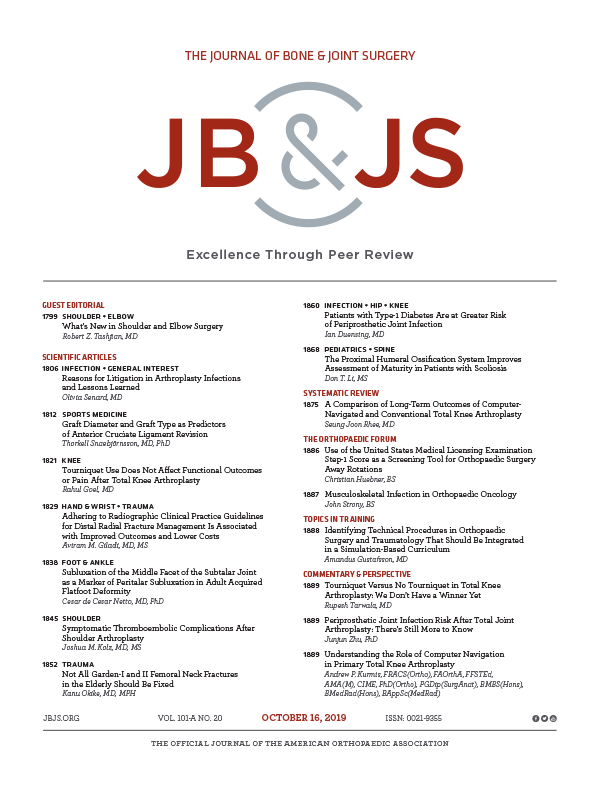
No benefit in recurrence by immobilizing primary shoulder dislocation in external rotation

No benefit in recurrence by immobilizing primary shoulder dislocation in external rotation
Immobilization in external rotation after primary shoulder dislocation did not reduce the risk of recurrence: A randomized controlled trial.
J Bone Joint Surg Am. 2011 May 18;93(10):897-904. Epub 2011 Apr 15.OE EXCLUSIVE
Dr. Liavaag discusses shoulder immobilization following primary shoulder dislocation.
Synopsis
188 patients with primary traumatic anterior shoulder dislocation were randomized to be managed by immobilization in either internal rotation or 15° of external rotation for a period of 3 weeks. The 2-year follow up concludes that the re-dislocation rates were similar in both the treatment groups.
Was the allocation sequence adequately generated?
Was allocation adequately concealed?
Blinding Treatment Providers: Was knowledge of the allocated interventions adequately prevented?
Blinding Outcome Assessors: Was knowledge of the allocated interventions adequately prevented?
Blinding Patients: Was knowledge of the allocated interventions adequately prevented?
Was loss to follow-up (missing outcome data) infrequent?
Are reports of the study free of suggestion of selective outcome reporting?
Were outcomes objective, patient-important and assessed in a manner to limit bias (ie. duplicate assessors, Independent assessors)?
Was the sample size sufficiently large to assure a balance of prognosis and sufficiently large number of outcome events?
Was investigator expertise/experience with both treatment and control techniques likely the same (ie.were criteria for surgeon participation/expertise provided)?
Yes = 1
Uncertain = 0.5
Not Relevant = 0
No = 0
The Reporting Criteria Assessment evaluates the transparency with which authors report the methodological and trial characteristics of the trial within the publication. The assessment is divided into five categories which are presented below.
4/4
Randomization
3/4
Outcome Measurements
4/4
Inclusion / Exclusion
4/4
Therapy Description
4/4
Statistics
Detsky AS, Naylor CD, O'Rourke K, McGeer AJ, L'Abbé KA. J Clin Epidemiol. 1992;45:255-65
The Fragility Index is a tool that aids in the interpretation of significant findings, providing a measure of strength for a result. The Fragility Index represents the number of consecutive events that need to be added to a dichotomous outcome to make the finding no longer significant. A small number represents a weaker finding and a large number represents a stronger finding.
Why was this study needed now?
There is a high risk of recurrence following a primary traumatic anterior shoulder dislocation, especially in the younger population. There have been several variable suggestions as to the best management. The orthopedic community is divided over the usefulness of the immobilization in external rotation. The study provides much needed evidence to determine best management.
What was the principal research question?
Does immobilization in external rotation provides any additional benefit to the future risk of recurrence, compared to standard immobilization in internal rotation?
What were the important findings?
- recurrence rate of 30.8% with immobilization in external rotation vs. 27.1% in internal rotation
- mean time to recurrence 10.5 months in External rotation group vs. 11.6 months in Internal Rotation group.
- median WOSI Score of 238 in external rotation vs. 375 in internal rotation group
What should I remember most?
External rotation immobilizers are not beneficial to reduce the risk of future shoulder dislocation.
How will this affect the care of my patients?
Although this study finds that external rotation immobilizers are not beneficial, the sample size may be too small for definitive conclusions.
Learn about our AI Driven
High Impact Search Feature
Our AI driven High Impact metric calculates the impact an article will have by considering both the publishing journal and the content of the article itself. Built using the latest advances in natural language processing, OE High Impact predicts an article’s future number of citations better than impact factor alone.
Continue



 LOGIN
LOGIN

Join the Conversation
Please Login or Join to leave comments.